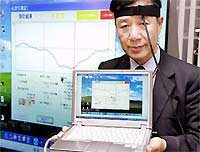A group of Chinese scientists has developed a new supercomputer that is fast enough to successfully run complex artificial intelligence models, comparable to the human brain.

The Sunway supercomputer utilizes numerous advanced technologies. (Photo: SCMP)
The researchers used the Sunway supercomputer to train an AI model named Bagualu, which has 174 trillion parameters, equivalent to the number of synapses in the human brain. Potential applications include self-driving cars, facial recognition, natural language processing, computer vision, life sciences, and chemistry. The research team presented their findings at the 2022 International Conference on Principles and Practice of Parallel Programming, organized by the Association for Computing Machinery. This achievement places the latest generation Sunway supercomputer on par with Frontier, the newest machine developed by the U.S. Department of Energy, and currently the most powerful supercomputer in the world.
The Sunway supercomputer can process one quintillion tasks per second and includes over 37 million CPU cores, which is four times more than Frontier. Sunway acts like an extremely powerful brain with 9 petabytes of memory, equivalent to over 2 million DVD-quality movies, and 96,000 semi-independent computer systems known as nodes.
The communication between nodes occurs at speeds exceeding 23 petabytes per second. One researcher noted that the machine’s parallel computing capability simulates human thought processes as if one is “eating while watching TV.” By combining crucial technologies such as specific internal node optimization for hardware and unprecedented large-scale parallel strategies, scientists can achieve high efficiency from the AI model.
Similar to its predecessor, the Sunway TaihuLight, the new machine uses domestically produced chips that help save energy and provide wide bandwidth. The TaihuLight supercomputer, produced by the Parallel Computing Technology and Engineering Research Center in Wuxi, Jiangsu, topped the list of the 500 most powerful supercomputers from 2016 to 2018.
Since 2016, China has developed three supercomputers capable of performing at least one quintillion calculations per second. Researchers have previously used the Tianhe supercomputer to screen and discover pharmaceuticals for treating COVID-19. Additionally, they have applied supercomputers in atmospheric modeling, earthquake studies, and quantum circuits.




















































